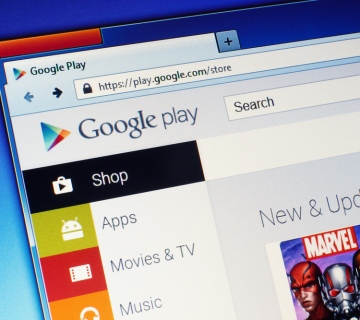The year of 2011 brought forth the release of a number of Android Tablets. At CES, Google put forward its Honeycomb Android tablet edition to the anticipating crowds. Big components manufacturers went on to make fancy reports about their tablets with Honeycomb. Yet, the numbers speak for themselves, and Android tablet edition did not manage to out-sell the iPad as many had predicted.
In our opinion, this is due to four main factors:
Cost Efficiency
As Apple came up with the original iPad back in 2010, many experts sighed to study its cost tag of $500. Many analysts assumed that no one would care for purchasing such an expensive device just for browsing the web. However, the sales numbers spoke for themselves, and Apple’s tablet went on to become a huge success, showing the cost-efficiency ratio of the product was just right.
With the release of competing Android Honeycomb Tablets such as the Motorola Xoom, the same success story was not repeated. These devices were priced at $800, which indeed proved to be a much too high price point. Even though these tablets did provide some features not available in the iPad, they did not manage to become the iPad killers as their developers so desired.
Bigger App Marketplace
Google Android has grand plans for its app shop, known as Android Market. Third team designers can develop HTML5 applications for Android tablets, and many developers keep joining the Android bandwagon and even porting their iPad apps. But when in comparison to Apple App Store, Android Market still looks quite underwhelming.
Granted, Google has been putting its weight behind several top tier apps, such as Google Maps, Google Sky Maps, Google Earth, Google Goggles, Google Finance and many others, but since most of these apps are also available for the iPad, it’s not enough to make the Android Marketplace standout as an exclusive source. Only time will tell if the Android Marketplace will ever reach close to the impressive numbers show in Apple’s Store.
Commerce doesn’t believe in Android
IT management teams were scared about Android viruses. Commerce often turns to the Ipad rather than Android tablets due to the viruses concerns. Even though tablets are getting massively adopted by medical centers, colleges IT companies, Android variants are still looked at with some suspicion. According to recent surveys, like the one from business source Good Technology, revealed that 96% of tablet launches used in the business sector as of 2011 were iPads.
The 16×9 crisis
Google aimed to differentiate its tablets by opting for 16×9 screen proportions for Android tablets, whereas Apple opted for a 4×3 ratio. Instead of duplicating what Apple had done, Google tried to innovate – which is a good thing. But it would later be established as a misstep, since many users don’t feel 16×9 formats are as comfortable to hold with one hand.
Many major Android tablets like Motorola Xoom, Samsung Galaxy Tab 10.1 and Asus Eee Pad Transformer are fixed into the 16×9 alignment, and while it’s great for video playback, the common agreement is that most people still favour the standard format used in the iPad.
It appears that Google’s face-off against Apple iPad wobbled in its primary step. However, with the latest version of the Android Operating system (Ice Cream Sandwich) and its many enhancements, its looks like Android might just strive for a return.
It’s also clear that Google has been mindful to learn from its mistakes, some of which are in the process of being amended. All in all, 2012 is arguably the make-or-break year for Android tablets, and we look forward to see the developments.
This guest post was brought to you by the Computer Too Slow, where you can learn tricks to make your old PC as quick and responsive as a tablet.


